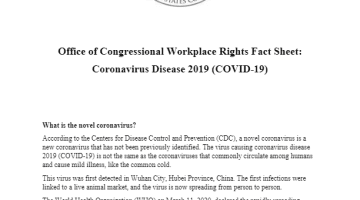What is the novel coronavirus?
According to the Centers for Disease Control and Prevention (CDC), a novel coronavirus is a new coronavirus that has not been previously identified. The virus-causing coronavirus disease 2019 (COVID-19) is not the same as the coronaviruses that commonly circulate among humans and cause mild illness, like the common cold.
This virus was first detected in Wuhan City, Hubei Province, China. The first infections were linked to a live animal market, and the virus is now spreading from person to person.
The World Health Organization (WHO) on March 11, 2020, declared the rapidly spreading coronavirus outbreak a pandemic, acknowledging that the virus will likely spread to every country on earth. As of this posting, 48 states and the District of Columbia have all declared states of emergency. On March 13, 2020, President Trump declared a national emergency.
The number of COVID-19 cases increases daily. For the most current infection, death, and recovery counts, please visit https://coronavirus.jhu.edu/ where the statistics are updated daily.
What are the symptoms?
The reported symptoms have ranged from mild symptoms to severe illness and death for confirmed COVID-19 cases. The following symptoms may appear 2–14 days after exposure:
- Fever
- Cough
- Shortness of breath
If you develop symptoms such as fever, cough, and/or difficulty breathing and have been in close contact with a person known to have COVID-19 or have recently traveled from an area with the ongoing spread of COVID-19, stay home and call your health care provider. Older patients and individuals who have severe underlying medical conditions or are immunocompromised should contact their health care provider early, even if their illness is mild.
